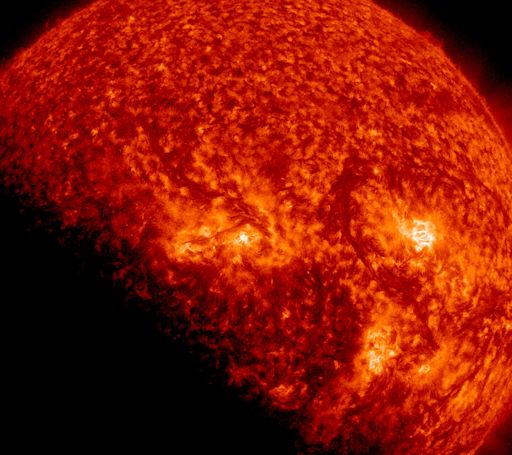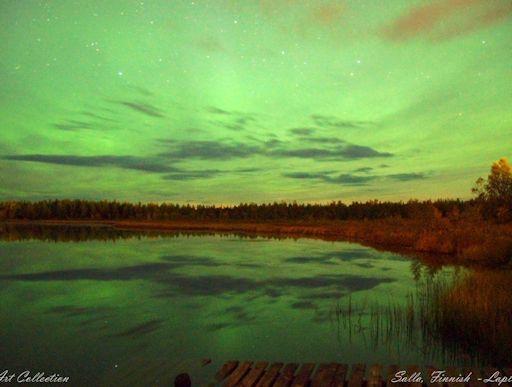When is the best time to see auroras? Where is the best place to go? And how do you photograph them? These questions and more are answered in a new book, Northern Lights - a Guide, by Pal Brekke & Fredrik Broms. | | |
QUIET SUNSPOTS: All of the sunspots on the Earthside of the sun are stable and quiet. NOAA forecasters estimate a slight 5% chance of M-class solar flares and no more than a 1% chance of X-class flares on Sept. 4th. Solar flare alerts: text, voice.
SOLAR ECLIPSE: Twice every year, around the time of the equinoxes, Earth can pass directly between the Sun and NASA's Solar Dynamics Observatory (SDO), producing a series of beautiful eclipses from the point of view of the spacecraft. SDO's autumnal eclipse season began this week, producing a partial blackout of the sun:

During the eclipse, which was centered around 0658 UT on Sept. 2nd, Earth covered about half of the sun. Because these eclipses typically last for only minutes each day (maximum=72 minutes), there is still plenty of uninterrupted time for SDO to monitor activity on the sun. The ongoing eclipse season will end on Sept. 25th. Between now and then, stay tuned for some rare blackouts.
Realtime Space Weather Photo Gallery
GREEN LIGHT! Last night the Finnish Lapland turned green. Photographer B.Art Braafhart of Sala, Finland, documented the event with a short exposure on his digital camera:

"To the naked eye, it was more of a light background color," says Braafhart, "but green is green!"
The green color of auroras is a sign of molecular oxygen. When solar wind and magnetospheric electrons rain down on the upper atmosphere, they strike atoms and molecules in the air. Different species produce different colors: O2 glows green, N2 purple, and O red. Although nitrogen is more abundant than oxygen in Earth's atmosphere, the green glow of excited O2 is so intense (relatively speaking) that it often overwhelms the other colors.
More green lights are in the offing. NOAA forecasters estimate a 25% chance of polar geomagnetic storms on Sept. 5 and 6 when a solar wind stream is expected to buffet Earth's magnetic field. Aurora alerts: text, voice.
Realtime Aurora Photo Gallery
Realtime Noctilucent Cloud Photo Gallery
[previous years: 2003, 2004, 2005, 2006, 2007, 2008, 2009, 2011]
Realtime Comet Photo Gallery
Potentially Hazardous Asteroids (
PHAs) are space rocks larger than approximately 100m that can come closer to Earth than 0.05 AU. None of the known PHAs is on a collision course with our planet, although astronomers are finding
new ones all the time.
On September 5, 2013 there were 1424 potentially hazardous asteroids.
Notes: LD means "Lunar Distance." 1 LD = 384,401 km, the distance between Earth and the Moon. 1 LD also equals 0.00256 AU. MAG is the visual magnitude of the asteroid on the date of closest approach. | | The official U.S. government space weather bureau |
| | The first place to look for information about sundogs, pillars, rainbows and related phenomena. |
| | Researchers call it a "Hubble for the sun." SDO is the most advanced solar observatory ever. |
| | 3D views of the sun from NASA's Solar and Terrestrial Relations Observatory |
| | Realtime and archival images of the Sun from SOHO. |
| | from the NOAA Space Environment Center |
| | the underlying science of space weather |

